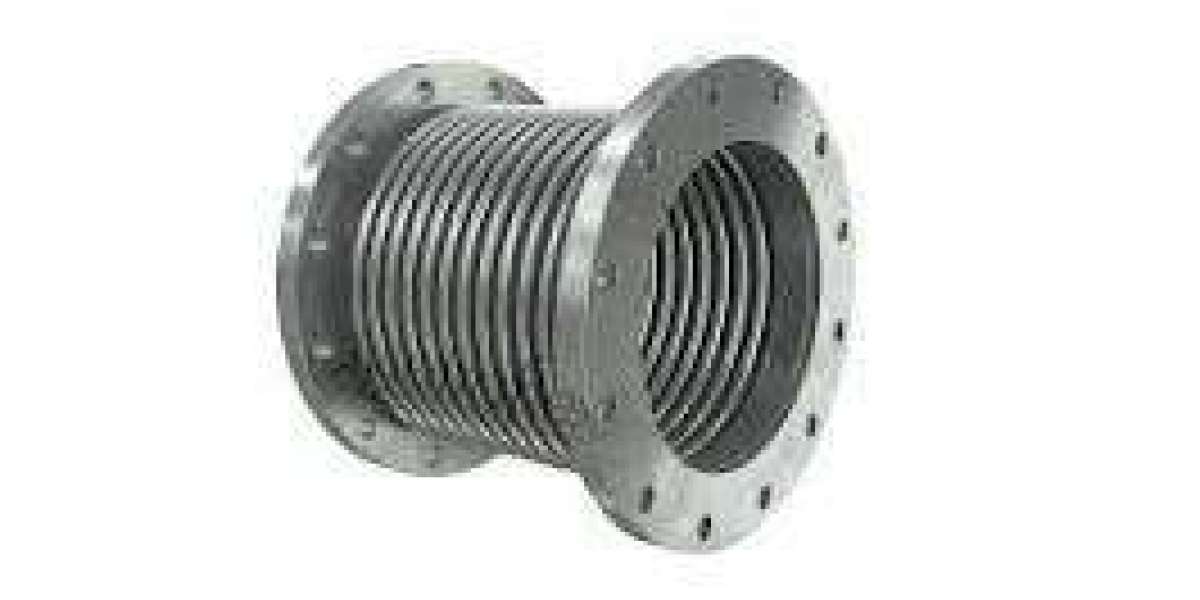In the world of piping and fluid transport systems, flexibility and durability are two critical requirements. Systems that transport hot or pressurized fluids often face challenges from thermal expansion, vibrations, and mechanical movements. One vital component that addresses these challenges is the pipe expansion bellows. These devices, often overlooked in casual discussions about piping infrastructure, play a central role in preserving the integrity and longevity of piping systems.
This article explores what pipe expansion bellows are, their working principle, types, materials, applications, and the importance of proper maintenance in industrial settings.
What Are Pipe Expansion Bellows?
Pipe expansion bellows, also known as expansion joints, are flexible elements integrated into piping systems to absorb thermal movement, mechanical vibrations, pressure thrusts, and misalignment. They consist of a series of convolutions or corrugations, usually made from metal, rubber, or composite materials, which allow them to expand, compress, and flex without compromising the pipeline's structural integrity.
These bellows are particularly crucial in systems exposed to high temperature variations, which can cause pipes to expand or contract. Without a flexible component like pipe expansion bellows, such changes could result in stress accumulation, cracks, or even catastrophic system failures.
Working Principle of Pipe Expansion Bellows
The functionality of pipe expansion bellows is rooted in their design. The corrugated or convoluted shape allows the bellow to accommodate axial, lateral, and angular movements. Here's how each movement is handled:
Axial Movement: When the pipe expands or contracts along its length due to thermal changes, the bellows compress or elongate accordingly.
Lateral Movement: Side-to-side displacement due to alignment issues or ground settlement is absorbed by the flexible structure.
Angular Movement: Bellows can flex at an angle to handle misalignments or rotational movement between two sections of piping.
The ability to accommodate multiple types of movement helps reduce stress on other components like flanges, valves, and pipe walls, thereby increasing the overall durability of the system.
Materials Used in Pipe Expansion Bellows
The choice of materials for pipe expansion bellows depends on the specific requirements of the system, such as temperature range, pressure level, chemical exposure, and environmental conditions.
Common Materials Include:
Stainless Steel: Offers excellent resistance to corrosion and high temperatures. Suitable for steam, gas, and chemical pipelines.
Carbon Steel: Used for lower temperature and pressure applications where corrosion is not a significant concern.
Rubber or Elastomeric Materials: Common in HVAC and low-pressure fluid systems, especially where flexibility is a higher priority than strength.
PTFE and Other Polymers: Ideal for chemical applications due to their resistance to corrosive substances.
Selecting the appropriate material ensures optimal performance and longevity of the pipe expansion bellows.
Types of Pipe Expansion Bellows
There are various types of pipe expansion bellows, each designed for specific applications and movement needs:
1. Axial Expansion Bellows
These are the most commonly used types. They absorb expansion or contraction in the axial direction of the pipe. They are particularly useful in straight pipelines that experience linear thermal movement.
2. Lateral Expansion Bellows
Designed to absorb movement in a perpendicular direction to the axis of the pipe. These are used when lateral displacement is expected, such as in systems with changes in direction or offset alignments.
3. Angular Expansion Bellows
These bellows handle angular rotation between two sections of a pipeline. They are ideal for compensating for bending moments or misalignments.
4. Universal Expansion Bellows
Made with two bellows connected by a central pipe or spool, these can handle axial, lateral, and angular movements simultaneously. They offer greater flexibility and are used in complex piping layouts.
5. Pressure Balanced Bellows
These are designed to absorb movement while minimizing the transfer of pressure thrust to anchors and adjacent equipment. They are ideal for systems where anchor points are not robust enough to handle axial loads.
Applications of Pipe Expansion Bellows
The use of pipe expansion bellows spans across numerous industries due to their versatility and necessity in managing thermal and mechanical stress. Here are some of the most common applications:
1. Power Plants
Pipelines carrying steam and hot water need to manage significant thermal expansion. Expansion bellows absorb this movement and protect equipment like turbines and boilers from damage.
2. Oil and Gas Industry
High-pressure pipelines carrying hydrocarbons are subject to pressure pulsations and thermal variations. Pipe expansion bellows are crucial for ensuring system integrity.
3. Chemical and Petrochemical Plants
These environments often involve corrosive fluids and temperature extremes. The bellows used must withstand chemical exposure while allowing pipe flexibility.
4. Marine and Shipbuilding
Pipe expansion bellows are used in marine engine systems and exhaust pipelines where vibration and motion are common due to vessel movement.
5. HVAC Systems
Heating, ventilation, and air conditioning systems use expansion joints to manage expansion and contraction in ductwork and piping due to temperature changes.
6. Infrastructure and Bridges
In large structures, thermal changes can cause expansion and contraction of embedded pipelines. Bellows help manage these movements and prevent cracking.
Installation and Design Considerations
Proper installation of pipe expansion bellows is critical for their performance and durability. Key considerations include:
Alignment: Misaligned bellows may fail prematurely. Accurate alignment during installation ensures long-term function.
Anchoring and Guiding: Proper anchoring prevents uncontrolled movement, while guides help direct expansion in the intended direction.
Movement Capacity: Bellows should be selected based on the expected movement (axial, lateral, or angular) to avoid overextension or overcompression.
Pressure Ratings: Each bellow is rated for a specific pressure range. Exceeding these limits can result in structural failure.
Compensator Placement: Strategic placement of expansion joints in a piping system maximizes their efficiency and lifespan.
Maintenance and Inspection
Routine inspection and maintenance are essential for ensuring the safe operation of pipe expansion bellows. Over time, fatigue, corrosion, and environmental factors can affect performance.
Maintenance Tips:
Visual Inspections: Look for signs of cracking, deformation, or leakage.
Functional Tests: Check for movement during temperature changes.
Cleaning: Remove debris that may compromise flexibility or cause abrasion.
Replacement Schedule: Follow industry guidelines or manufacturer recommendations for replacement intervals.
Proactive maintenance not only prolongs the life of the bellows but also prevents costly unplanned downtime and system failure.
Advantages of Using Pipe Expansion Bellows
The use of pipe expansion bellows offers a range of benefits, including:
Stress Reduction: Minimizes mechanical stress on pipes and connected equipment.
Vibration Dampening: Absorbs vibrations from pumps and engines.
Noise Reduction: Helps in lowering noise levels in pressurized systems.
Versatility: Suitable for a wide range of temperatures, pressures, and fluid types.
Space Efficiency: Allows for compact piping layouts without the need for large expansion loops.
Future Trends and Innovations
As industries evolve, so does the technology behind pipe expansion bellows. Future developments are likely to focus on:
Smart Monitoring Systems: Sensors embedded in bellows to monitor movement, temperature, and stress in real-time.
Advanced Materials: Use of nanomaterials and composites for improved strength, flexibility, and corrosion resistance.
Sustainable Manufacturing: Environmentally friendly production methods and materials to reduce the carbon footprint of industrial piping systems.
These innovations will further enhance the reliability and efficiency of expansion joints in critical infrastructure projects.
Conclusion
Pipe expansion bellows are indispensable in maintaining the integrity, safety, and efficiency of modern piping systems. Whether used in high-pressure steam lines, chemical processing plants, or HVAC systems, their ability to absorb movement and prevent stress-related damage makes them a vital component of industrial design.
With proper selection, installation, and maintenance, these expansion joints can significantly extend the life of piping systems while ensuring compliance with safety and performance standards. As industries continue to prioritize operational efficiency and sustainability, the role of pipe expansion bellows will only become more critical in the years to come.


